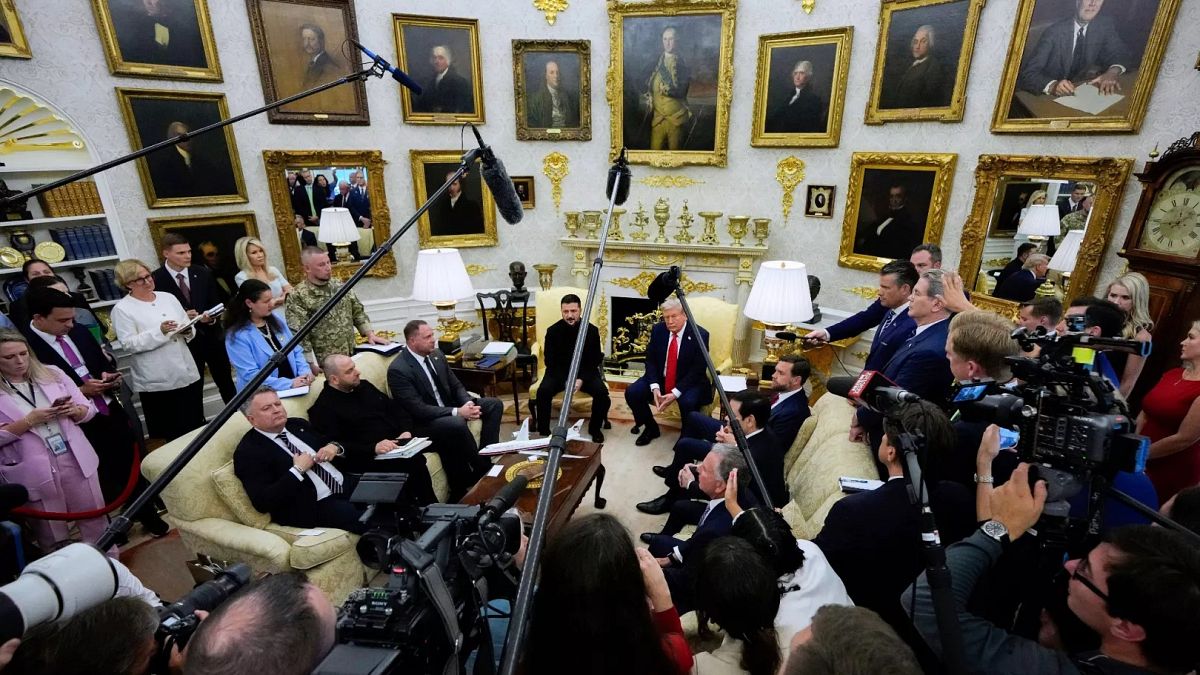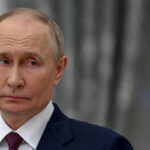While negotiating a cease-fire agreement between Israel and Hamas, US President Donald Trump issued an ultimatum to the extremist group: if they did not accept the agreement, “hell like no one has ever seen will break out.”
The U.S. president may now adopt a similar approach toward Russia after months of diplomatic efforts have brought the country no closer to a ceasefire or peace agreement.
Moscow not only refused to negotiate with Kiev, but even refused one-on-one talks with Russian President Vladimir Putin and Ukrainian President Volodymyr Zelensky.
On Friday, President Trump and President Zelenskiy are scheduled to meet in Washington for the sixth time since the president returned to the White House.
President Trump commented on what exactly the two leaders would discuss, saying Ukraine wants to “launch a counterattack” against Russia.
“They want an attack,” the US president said on Wednesday. “I’m going to make a decision on that, but they want to be aggressive, so we’re going to have to make a decision.”
Although he did not provide details on what the “offensive” tactics would be or where exactly Ukrainian troops would begin moving, there is more clarity on what weapons the United States might supply Ukraine with, namely Tomahawk missiles.
With a range of 1,600 to 2,500 kilometers and a powerful warhead weighing 400 to 450 kilograms, these cruise missiles could become a key element in Ukraine’s attack on Russian military positions deep in its rear. This will also be an important aspect and step in Kiev’s planned counteroffensive operations.
“Measures like Patriot and Tomahawk can help lay the foundations for long-term peace,” President Zelensky said on Wednesday.
“The topic of the meeting with the President of the United States is very substantive. It could bring the war closer to a true end. It is the United States that can wield this kind of global influence, and we are making every effort to have countries around the world join us in this effort,” he said.
But Tomahawk missiles are not the only thing Washington can offer. Ukraine’s president confirmed his intention to discuss air defense, but President Trump said the United States was considering “other options” besides the Tomahawk. He did not say what those options were.
The Kremlin has claimed that supplying Tomahawks to Ukraine represents a “dramatic escalation” of Moscow’s all-out war, while Russia itself regularly uses long-range missiles to target Ukrainian civilians and critical infrastructure.
President Zelenskyy said earlier this week: “We have seen and heard that Russia is concerned that the United States will provide tomahawks, which suggests that this type of pressure may be effective in achieving peace.”
President Trump meets with President Putin in Hungary
Meanwhile, President Trump said Thursday night that he would meet again with Putin for a new meeting in Hungary, but said a date had not yet been set.
While publicly acknowledging that a conversation about the Tomahawks is about to take place on Friday, the US president has also openly doubted Moscow’s military capabilities.
In comments directed at the Russian president, Trump urged Russia to reach a peace agreement and said a prolonged war would be bad for Russia’s image as a great power.
“That’s all we want from President Putin: Stop killing (Ukrainians), stop killing Russians, because he’s killing a lot of Russians. Again, that doesn’t make him look good,” Trump said.
“This is a war he had to win within a week, and he’s now in his fourth year. That doesn’t make this big, so-called war machine look good,” he added.
“But he could settle. We want to settle. We thought we had an agreement.”
In his final comments, President Trump referred to his meeting with President Putin in Alaska in August, saying that although it did not result in a ceasefire agreement, it marked important progress in the peace process.
However, the diplomatic process has stalled as the Kremlin has refused to meet with President Zelenskiy.
During the summer, Russia sought to seize more Ukrainian territory in order to gain greater leverage in any negotiations, but Russia’s extremist demands for Ukrainian territory included areas it had never previously controlled.
However, Moscow’s attack was unsuccessful, and its forces were ultimately unable to capture any more territory.








